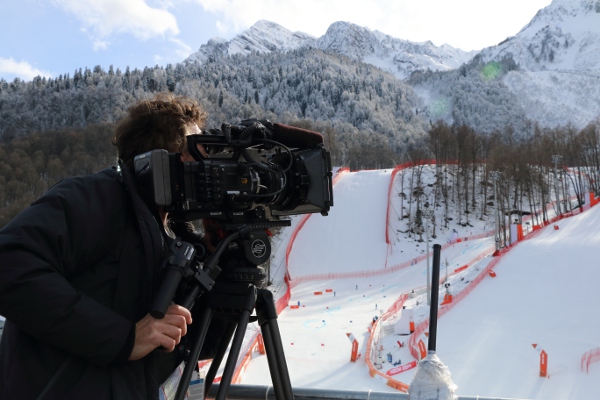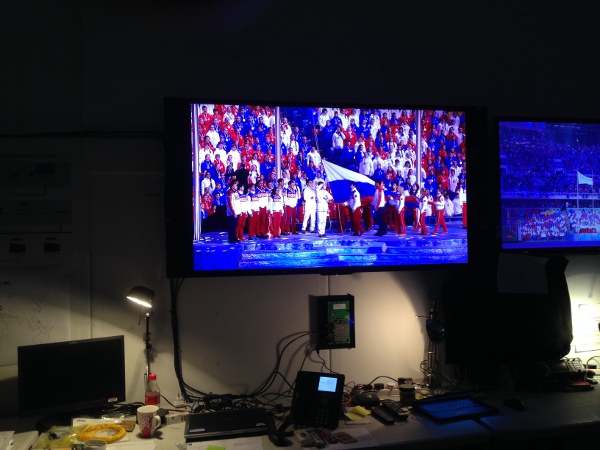4K: Early Steps from Sochi
SOCHI, RUSSIA 4K may be a long way off, or a medium term affair depending on who you talk to, but there was a bit of it in trial form found in the Sochi IBC.
Russian satellite pay-TV provider NTV-Plus delivered a live satellite broadcast of the Opening Ceremony in 4K, with help from vendors Elemental and Broadcom. As might be expected, Panasonic recorded the opening ceremony in 4K. Never one to disappoint, NHK had an 8K Theatre in the main hall of the broadcast center.

NBCU and Comcast seized the opportunity to essentially prove a 4K distribution model. This ‘4K exploration’ used a bit of Panasonic’s 4K Opening content, but mostly relied on daily footage shot by one NBCU cameraman shooting with a Sony PMW-F55 4K camera.
The cameraman would shoot about 20 minutes of content each day----a bit of competition footage along the lines of an athlete crossing the finish line, and a lot of scenics and such.
He was shooting 50 frame progressive, recorded on SxS cards using XAVC at 500 Mbps, one of the Sony formats that the F55 supports. The 4K-50P files were transferred to shared storage for simultaneous transfer to Denver and import into Avid for eventual conversion to XDCAM-HD50. The XDCAM version was for use in the normal HD broadcast.
Lukas Zahas, Manager, Broadcast Technology at NBC Olympics, said "The shared storage allowed us to seamlessly feed the HD and 4K workflows."

Chris Seeger, Director, Advanced Content Production Technology for NBCU, said the XAVC 4K file was sent via Aspera file transfer to the Comcast Dry Creek facility in Colorado. “We edited and color corrected using XAVC-50P natively and used ProRes as a mezzanine export codec to the HEVC encoder. The limited conversion steps between camera and viewer kept the end product as clean as possible.”
Get the TV Tech Newsletter
The professional video industry's #1 source for news, trends and product and tech information. Sign up below.
A Comcast post production arm called West Works Studios edited the 4K highlights before the file was compressed via an Elemental encoder to HEVC (H.265) and E-AC-3 in a 22 Mbps transport stream for use in the play out server.
The highlights were then streamed out across Comcast’s existing nationwide IP distribution network as both 25 and 50 frames per second channels feeding existing QAM modulator infrastructure at local head-ends. Demos of the 50 frames/second channel took place at several sites including Washington, The Comcast Center in Philadelphia, San Francisco, The NBCU Technology Center, and more.
It also came back to Sochi and the NBC IBC, where it could be viewed on screen in the Broadcast Operations Center (BOC) courtesy of a small prototype set-top box with a Broadcom HEVC decoder. The box also had an RF input, so it could feed off of coax as well.

